- Home
- William Shakespeare
A Midsummer Night's Dream Page 12
A Midsummer Night's Dream Read online
Page 12
The acrobatics, circus skills, and trapeze acts of the actors defined them as magical beings that could defy gravity. In keeping with this, the costumes of the fairies resembled a cross between Chinese acrobats and romper-suits. Oberon, Titania, and Robin wore vivid primary colors, whereas the fairies of the lower hierarchy wore gray silk:
The fairies were no longer thought of as decorative, but as functional. They appeared as hefty circus hands when they swept up the confetti, as familiar spirits when they physically controlled the movements of the lovers and demoniacally trapped them in their steel forest, and as amoral trolls when they stripped Snug of his trousers and created an obscene phallus for Bottom.23
The box set that Adrian Noble opted for in 1994 was reminiscent of Brook's, but in its simplicity created an environment which suited his particular vision of the play: a low-walled, single-doored chamber was dominated by a trapeze, suggesting the surreal strangeness of a dream. Noble remarked that "of course in its first performance the Dream would not have had a wood. What we want to achieve is a sort of fluidity whereby the action is not held up by endless clumsy scene changes."24 The bare set allowed the fluidity of action, but also, "never let the audience forget that we are in the midst of a dream. At certain points in the evening, we hear the sound of heavy breathing, as if we were eavesdropping on the sleeping Shakespeare as he conjures his own play."25
Designer Anthony Ward, on discussing the concept with Noble, recalled that
we found ourselves talking in terms of abstract design, which led me to think immediately of the work of the French Surrealist painter Rene Magritte ... we were inspired by the idea of A Midsummer Night's Dream as a study of the world of dreaming and sleep. So what we needed was a design style which would allow us to present the conscious, real, world overlapping with the world of the subconscious ... [Magritte's] paintings juxtapose items from the ordinary, real world in a way which makes them seem strange and gives them a new and interesting resonance. So, in our production you see ordinary, household objects, such as an umbrella, transformed to serve a completely different function.26
Umbrellas were used as a means of levitation and flight. "Titania's chief mode of conveyance--and bedroom--[was] a vast, suspended Magritte umbrella sumptuously lined with red quilt."27 The use of doors which popped up through the floor and aided the action of the lovers had a psychological significance: "Why the doors and all the rushing in and out of them that duly ensues? You hardly need ask. People are passing from waking to dreaming, consciousness to subconsciousness, ignorance and self-discovery."28
In order to differentiate between the Athenian court and the forest, Noble's lighting designer, Chris Parry, lit the bare set with colors that were descriptive rather than representational--scarlet for Athens and indigo for the enchanted wood:
[Noble] didn't want trees, a forest, or anything like that ... I wanted to achieve a forest made out of beams of light and light bulbs ... most of the action ... takes place at night, but rather than using the straight-forwards "night-time" blue I have used a lot of purples and lavenders ... very sensuous colors which suggest the mysterious magical quality of night.29
Abstract stagings of the Dream are often met with slight hostility by audiences who come to the theater with a preconceived idea of what the play should look like. There is still a tendency for people to hark back to the Victorian image of the fairy in its idyllic forest setting. This holds a certain nostalgia, an innocence, going back to a time in history when people were still willing to believe in such things. However, the image is still prevalent in the social consciousness, and one that can still be found in most gift and card shops. Where these productions have succeeded is in the creation of a completely new magical space with a physical theatricality to complement Shakespeare's text.
"To wake and be free / From this nightmare we writhe in"30
Brook's production revealed to many viewers and critics that "the Dream is a fearful play."31 Picking up on this dark strand, many productions since have emphasized the nightmarish elements evident in the text. No more so than the RSC's 2002 production, which made direct references to modern horror films. The Guardian's veteran critic Michael Billington observed that
Richard Jones provides something closer to a gothic nightmare ... designer Giles Cadle [does] everything possible to create "the fierce vexation of a dream" ... Shakespeare's Athenian wood, here dominated by a humanised tree with claw-like branches, becomes a sinister conflation of Friday The Thirteenth, Hallowe'en and Edward Scissorhands. Fast breeding flies swarm over Cadle's box set, hands emerge through the walls as in Polanski's Repulsion and the transformed Bottom sports a disfigured mask with phallic ears while Puck carries his original head tucked underneath his arm.32
The disorientating and starkly black and white set, like an "optical magician's camera obscura,"33 combined the surreal and the abstract: "a wonky oblong that's half-moon, half-egg; cigarette-like cylinders with steps cut into their ends; a sort of squashed ice-cream cone that weirdly doubles as a train on which the rude mechanicals, themselves a grey-garbed ... blend of Soviet convicts and British hikers, decide to arrive."34
The sex and horror that Jan Kott found in the play were taken to their extreme: "Titania resembling a debauched Hamburg nightclub queen"35 and Robin taking Hermia's line "O hell! To choose love by another's eyes" literally, by physically removing and then swapping the eyes of the lovers. Many reviewers felt the actors and the plot were overwhelmed by the mechanics of this imaginative design. They describe them as "competing" with the set and the interpretation of the play, which often worked against the text. However, others felt that this production tapped "into something important. In giving us the Bard as Goth, and putting the 'witch' back into bewitching, it reminds us how dark and disturbing this play--Shakespeare's most beguiling--can be."36
Albeit with a subtler tone, this emphasis was also strong in John Barton's 1981 production. He, too, in the words of critic Jay Halio,
totally rejected any cute, gauzy, bewinged creatures and opted instead for wooden puppets that closely resembled the kind of Victorian dolls beloved by the makers of horror films ... Manipulated by black clad actors and actresses who also spoke their lines, those fairies Shakespeare failed to nominate were dubbed in the programme "Black Boy," "Girl with Red Hair," "Broken Head," etc.... At one point, Oberon had to fight his way past a mass of screeching dolls to get to Titania's bower.37
These puppet fairies first appeared, flying out from a wicker prop basket, trailing colored streamers in various stages of disintegration and decay that moved "in large sweeping and diving motions [against a] black cyclorama, they seem like small macabre souls, darting silently in the blackness ... They hover in the air protectively, around Titania, and they watch anxiously as the fairy king and queen quarrel, shifting and darting, their puppet limbs sometimes clacking quietly in the silence like bones."38 The style of the whole production led reviewers to question what had been described as the RSC's salute to the royal wedding of Prince Charles and Diana Spencer. "If so," wrote Benedict Nightingale in the New Statesman,
it's an ambiguous one, with something akin to two fingers sprouting from the patriotically outstretched arm ... the doubling of real and fairy king and queen, with the suggestion that Oberon's revenge on Titania reflects and resolves Theseus's subconscious hostilities toward Hippolyta, his bride-to-be. In other words, Chuck might feel better about Di if he imagined her having sex with a prole with a donkey's head.39
In Gregory Doran's entertaining 2005 production, the mortal world was "a chilly, soulless place, with a suggestion of the totalitarian state about it."40 More nightmarish and unforgiving than the fairy world, Theseus' military uniform made him resemble "a fascist leader."41 With a death threat hanging over her head, Hermia's escape into the forest with Lysander takes her from the proverbial frying pan into the fire. Jonathan Slinger's refreshingly lugubrious and mischievous Robin plays with the lovers as if they are puppets for his amusement. In the hands o
f this curmudgeonly skeptic, who has no qualms about his treatment of mortals, one would fear for their fate if he were not tempered by his master, Oberon, who feels for the lovers' plight.
The Spectator's reviewer, Patrick Carnegy, remarked that
The fairy band is a motley crew of ragamuffins who have one important accomplishment--their magic is that of puppeteers ... Doran gives us the changeling boy as an exquisitely animated puppet ... Bottom's attendants materialise as a macabre collection of doll-puppets manipulated by their fairy alter egos ... whenever Mustardseed opens his mouth to speak, his head pops up and away off his body.42
The themes of manipulation and entrapment in the forest scenes culminated when Robin led the lovers "Up and down, up and down." Working together, the fairies physically manipulated the lovers' movements like their "doll-puppets," holding onto their limbs and guiding them to the appointed place for Robin to send them to sleep.
Nightmares, as other dreams, offer the possibility for self-exploration and understanding. The lovers, Titania, and Bottom all learn through a period of transformation, akin to a waking dream, that the exploration of the worst parts of themselves can free them from nightmare. Scholar Stanley Wells commented in the program note that
As the lovers go off to marriage, we are likely to feel that they have been through a necessary but profoundly disturbing experience, and that now they are safely on the other side of it. The experience has grown "to something of great constancy," enriching their lives just as Bottom's "rare vision" enriches his. They bring back into the ordinary world something that they learned in the world of imagination. The illusory has its part in the total experience of reality.43
In avoiding the baggage of treating the Dream as a light fairy-piece for children, many directors have chosen to focus on the darker elements of the play, with varying success. The difficulty for them arises in trying to strike a balance between the comedy and the darkness.
Everything Seems Double
The doubling of the fairy and mortal characters in A Midsummer Night's Dream may appear now as the normal directorial choice. However, this development in staging has only been prevalent in the last fifty years. Through this device directors have explored the relationship between the mortals and the fairies in terms of the conscious and the unconscious.
In 1970 this was a relatively new innovation which radically altered the reading of the play, and extended the psychological journey of Bottom and the four lovers to all the mortals. Brook's Dream depicted the unconscious enactment of unresolved tensions which needed to be explored before the royal couple could come together in happy marriage at the end of the play. The director himself explained:
The play unfolds like a dream before [Theseus and Hippolyta's] wedding in which an almost identical couple appear--Oberon and Titania. Yet this other couple are in an opposition so great that, as Titania announces in a language of great strength, it brings about a complete schism in the natural order ... Thus on the one hand we have a man and woman in total dispute and, on the other, a man and woman coming together through a concord found out of a discord. The couples are so closely related that we felt that Oberon and Titania could easily be sitting inside the minds of Theseus and Hippolyta.44
In Bill Alexander's 1986 production only Hippolyta and Titania were doubled, while Theseus and Oberon were played by separate actors:
The key to Mr. Alexander's interpretation lies in the moment when, as the rude mechanicals come on stage to rehearse, Janet McTeer's elegant, disdainful Hippolyta passes them on her way off. She and Bottom exchange a long appraising look across a social chasm. What follows is, in effect, Hippolyta's dream.45
This Hippolyta, described as "glacial and contemptuous"46 in the Athenian scenes, obviously did not relish the prospect of marriage to the boring Theseus. She "has the opportunity to express an inner life--a slinkily clad ice-maiden whose fantasies are realized by transformation into a fairy queen of bewitchingly tender sexual desire."47 Her Oberon (Gerard Murphy) became the ideal partner, equal to her in physical strength and passion. The wordless coda at the start of the play also put a different spin on Titania's relationship with Bottom:
In the wood, the affection between [Bottom] and [Titania] is played almost completely "straight," emphasizing both its realness and its impossibility. Love that crosses barriers in the night's most hopeless "dream," sprinkling regret over the ubiquitous frolics.48
This Bottom was gentler and more sympathetic, a true alternative to the chauvinism of Theseus and Oberon; consequently, he drew from Titania a warm and tender response, which, if it did not entirely eliminate the element of lustful sensuality, de-emphasised it considerably.49
At the end of the play, Hippolyta stepped into the fairy ring and--as Titania--sang the blessing with Oberon to the newlyweds, harmonizing the worlds of the play, and emphasizing the connection between reality and dreams.
In Michael Boyd's 1999 production, the fairies were played as doppelgangers of the mortals, releasing their inner selves from their daytime personae. According to Times critic Benedict Nightingale,
Theseus and Hippolyta become their subconscious selves, Oberon and Titania. They dream out their conflicts and marry happily. But Boyd takes the approach further ... Athens itself sheds its superego and lets its id rampage, until Theseus, Hippolyta, lovers, mechanicals, everyone, are clattering together in a dance that Zorba himself would have found too anarchic.50
Aidan McArdle, who doubled as Robin and Philostrate, explains that Act 3 Scene 2, in which Oberon comforts Robin's fear at the coming dawn, was given an added significance by the whole concept of the production:
We had it in our heads as we played this ... that they were afraid of turning back into their daylight selves. As it gets light Puck must be transformed into that monster Philostrate--and Philostrate is as much a monster for Puck as Puck is for Philostrate.51
The opening scenes in the Athenian court contained virtually no color; the characters were wrapped up in large dark overcoats. The fairy world emerged from the mortal world via a simple device:
The repressed, regimented, grey court, reminiscent of Cold-War Russia, would move to the forest by way of the transformation scene, which would begin with artificial flowers (the first color in the play) sprouting through the stage floor.52
The transformation from Athens to fairyland was enacted by two characters from the Athenian court who stripped off each other's clothes to reveal the "fairy" beneath. This also signaled how the sexual war, and sexual frustrations of the fairy world, were impinging on the real world:
Sirine Saba, Philostrate's side-kick in the court scenes, came on in her white gloves, fur hat, and spectacles. Philostrate appeared in the doorway behind her as she bent down--ostensibly to pick a flower, but somehow in a rather suggestive manner. Philostrate would then stalk her down the stage ... he would catch her up and ... be right behind her the next time she bent down. Philostrate had had an idiosyncratic little gesture, in the court scene, of stepping forward and rocking on his heels. This movement behind a girl bending down was, obviously, very sexual ... She would then turn, and slap me across the face. I would ... then remove her hat, pull off its ear-flaps and throw it away. She would ... then remove my glasses and break the arms off ... take off my bowler hat, spit in it, and throw them all into the wings. Things would then escalate ... until we would be ripping the clothes off each other with frenzied energy. This was followed by energetic kissing, the fierceness of the love/hate relationship descending rapidly into pure sexuality. She would then run away in a very coy, teasing manner, which was the cue for the first line of the scene: "How now, spirit, whither wander you?" ... the scene became directly about desire and passion--everything they had both been repressing at court.53
If We Shadows Have Offended
Puritan writers such as Philip Stubbes were shocked by the degree of sexual license taken at May Day and Midsummer Night festivals. His work Anatomy of Abuses published in 1583, then reprinted in 1585 and 1
595 (very probably the same year in which Shakespeare wrote the Dream), spoke out against the pagan rituals still abundant in England at the time:
All the young men and maids, old men and wives, run gadding over night to the woods, groves, hills, woods, and mountains, where they spend all the night in pleasant pastimes ... I have heard it credibly reported (and that viva voce) by men of great gravity and reputation, that of forty, threescore, or a hundred maids going to the wood over night, there have scarcely the third part of them returned home again undefiled. These be the fruits which these cursed pastimes bring forth.54 In 1642 the Puritans closed the theaters. In 1644 the May festival was banned. From their representation in his plays, we can imagine that these were not Shakespeare's favorite people.
Most modern productions have the lovers go through various states of undress as they make their journey through the hostile forest. However, it is a mistake to think of this as just a sexual undressing. As the program to Sheila Hancock's 1984 touring production suggested, it is also a process of self-discovery:
In sleep we have a reversion to a more primitive type of experience ... The dream becomes a revelation. It strips the ego of its artificial wrappings and exposes it in its native nudity. It brings up from the dim depths of our subconscious life the primal, instinctive impulses, and discloses to us a side of ourselves which connects us with the great sentient world.55
In a world where magic and the supernatural are no longer a part of everyday life, "once we are out of childhood the closest we come to magic is through our dreams; in this extra-terrestrial world we meet the part of ourselves which we bury under social convention."56 In modern productions of A Midsummer Night's Dream, that buried part of the self has invariably been depicted as the sexual self--in keeping with the aspect of the May which so appalled Stubbes in Shakespeare's day. Shakespeare critic Mary Maher explains:

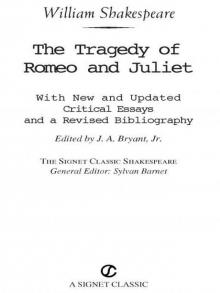 Romeo and Juliet
Romeo and Juliet As You Like It (Folger Shakespeare Library)
As You Like It (Folger Shakespeare Library)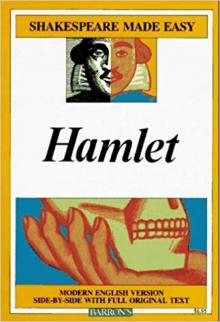 Hamlet
Hamlet Richard II (Folger Shakespeare Library)
Richard II (Folger Shakespeare Library)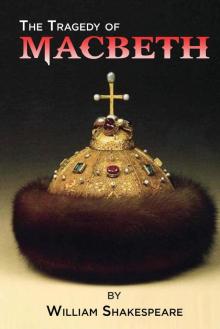 Macbeth
Macbeth Henry V
Henry V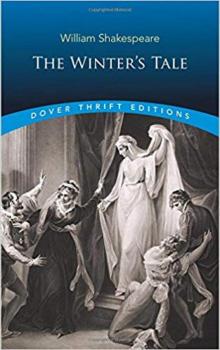 The Winter's Tale
The Winter's Tale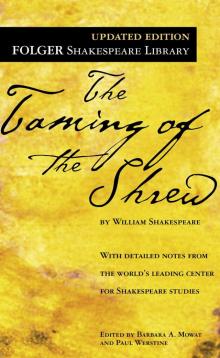 The Taming of the Shrew
The Taming of the Shrew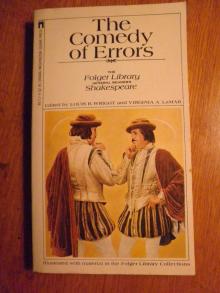 The Comedy of Errors
The Comedy of Errors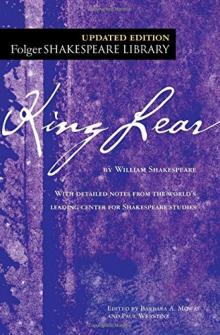 King Lear (Folger Shakespeare Library)
King Lear (Folger Shakespeare Library)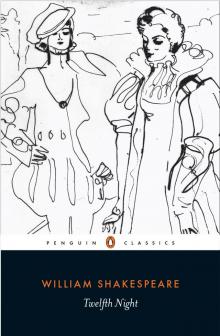 Twelfth Night
Twelfth Night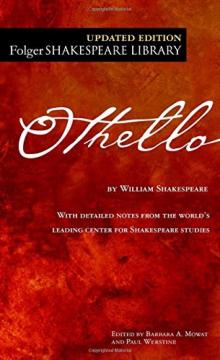 Othello
Othello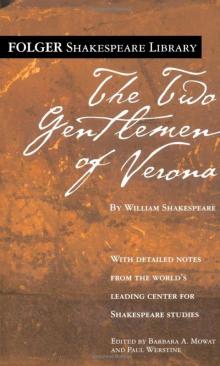 The Two Gentlemen of Verona
The Two Gentlemen of Verona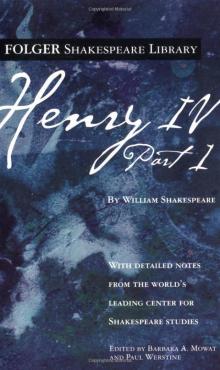 Henry IV, Part 1 (Folger Shakespeare Library)
Henry IV, Part 1 (Folger Shakespeare Library) King John/Henry VIII (Signet Classics)
King John/Henry VIII (Signet Classics)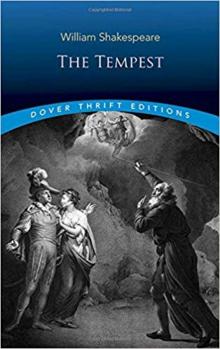 The Tempest
The Tempest Titus Andronicus (Dover Publications)
Titus Andronicus (Dover Publications)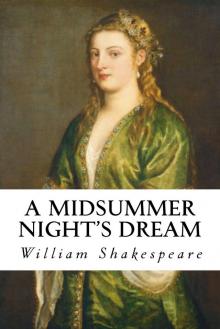 A Midsummer Night's Dream
A Midsummer Night's Dream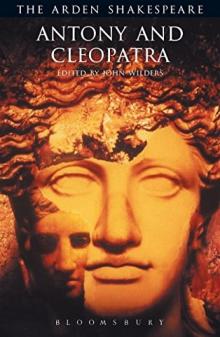 Antony and Cleopatra (Arden Shakespeare: Third Series)
Antony and Cleopatra (Arden Shakespeare: Third Series)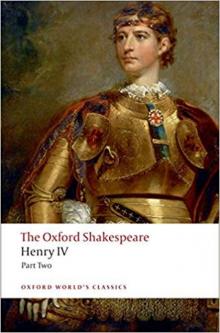 The Oxford Shakespeare: Henry IV, Part 2 (Oxford World's Classics)
The Oxford Shakespeare: Henry IV, Part 2 (Oxford World's Classics)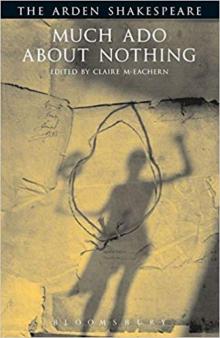 Much Ado About Nothing (Arden Shakespeare: Third Series)
Much Ado About Nothing (Arden Shakespeare: Third Series)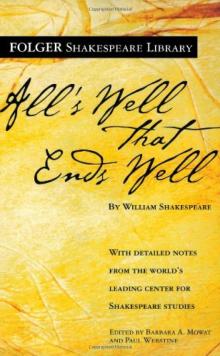 All's Well That Ends Well
All's Well That Ends Well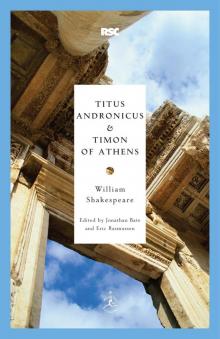 Titus Andronicus & Timon of Athens
Titus Andronicus & Timon of Athens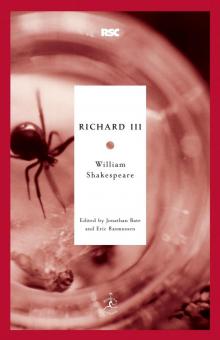 Richard III (Modern Library Classics)
Richard III (Modern Library Classics) Coriolanus
Coriolanus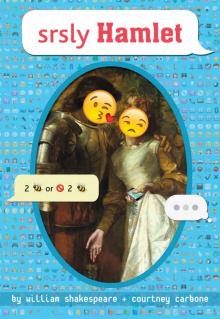 srsly Hamlet (OMG Shakespeare)
srsly Hamlet (OMG Shakespeare) The Merchant of Venice
The Merchant of Venice Richard III
Richard III Richard II
Richard II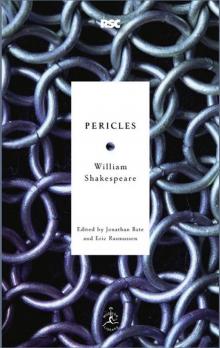 Pericles
Pericles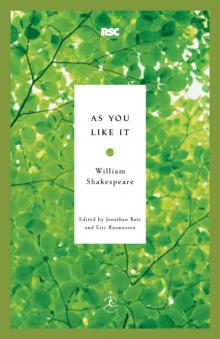 As You Like It
As You Like It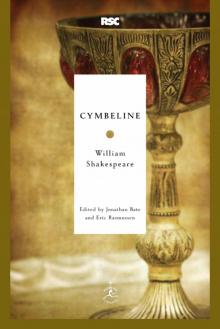 Cymbeline
Cymbeline Alls Wel that ends Well
Alls Wel that ends Well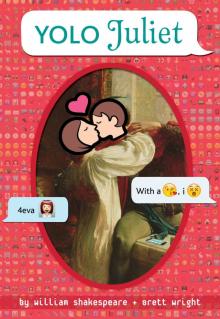 YOLO Juliet
YOLO Juliet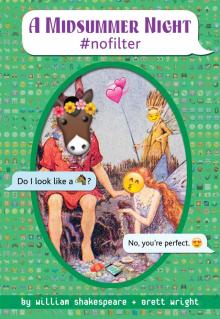 A Midsummer Night #nofilter
A Midsummer Night #nofilter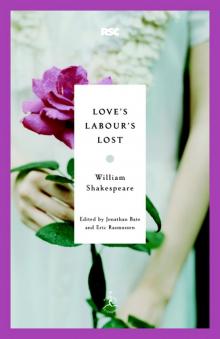 Love's Labour's Lost
Love's Labour's Lost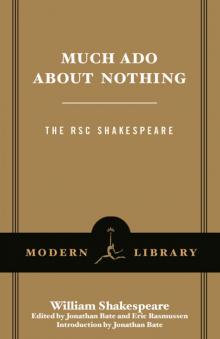 Much Ado About Nothing
Much Ado About Nothing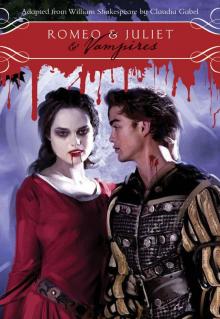 Romeo & Juliet & Vampires
Romeo & Juliet & Vampires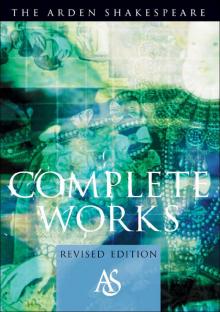 The Arden Shakespeare Complete Works
The Arden Shakespeare Complete Works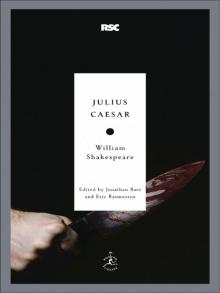 Julius Caesar
Julius Caesar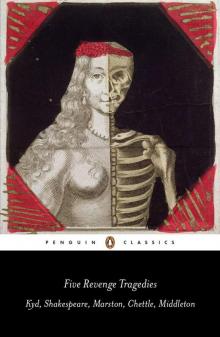 Five Revenge Tragedies: The Spanish Tragedy, Hamlet, Antonio's Revenge, The Tragedy of Hoffman, The Revenger's Tragedy (Penguin Classics)
Five Revenge Tragedies: The Spanish Tragedy, Hamlet, Antonio's Revenge, The Tragedy of Hoffman, The Revenger's Tragedy (Penguin Classics)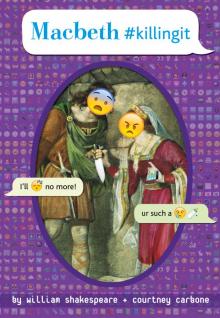 Macbeth #killingit
Macbeth #killingit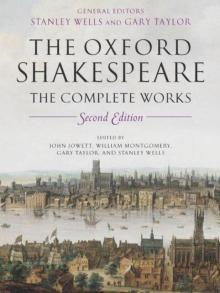 The Oxford Shakespeare: The Complete Works
The Oxford Shakespeare: The Complete Works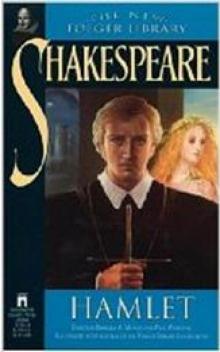 Hamlet, Prince of Denmark (Collins edition)
Hamlet, Prince of Denmark (Collins edition)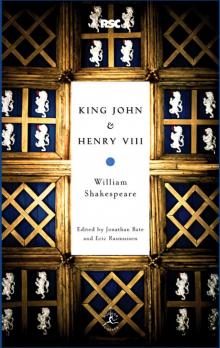 King John & Henry VIII
King John & Henry VIII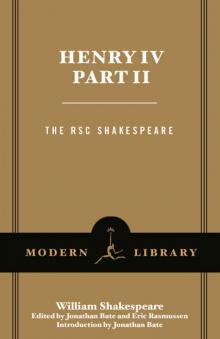 Henry IV, Part 2
Henry IV, Part 2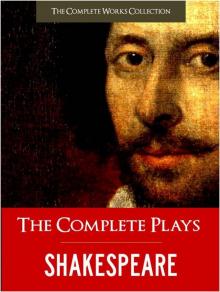 Complete Plays, The
Complete Plays, The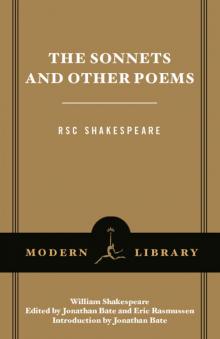 The Sonnets and Other Poems
The Sonnets and Other Poems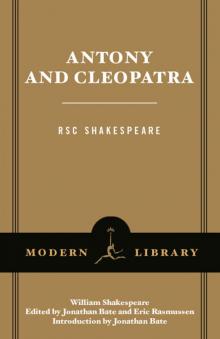 Antony and Cleopatra
Antony and Cleopatra Henry IV, Part 1
Henry IV, Part 1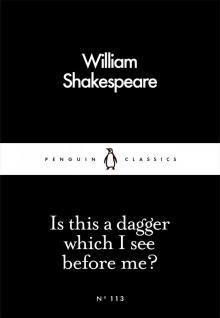 Is This a Dagger Which I See Before Me?
Is This a Dagger Which I See Before Me? The Complete Works of William Shakespeare In Plain and Simple English (Translated)
The Complete Works of William Shakespeare In Plain and Simple English (Translated)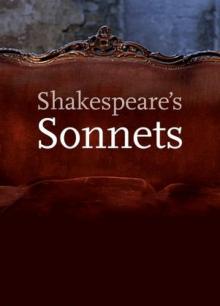 The Sonnets
The Sonnets